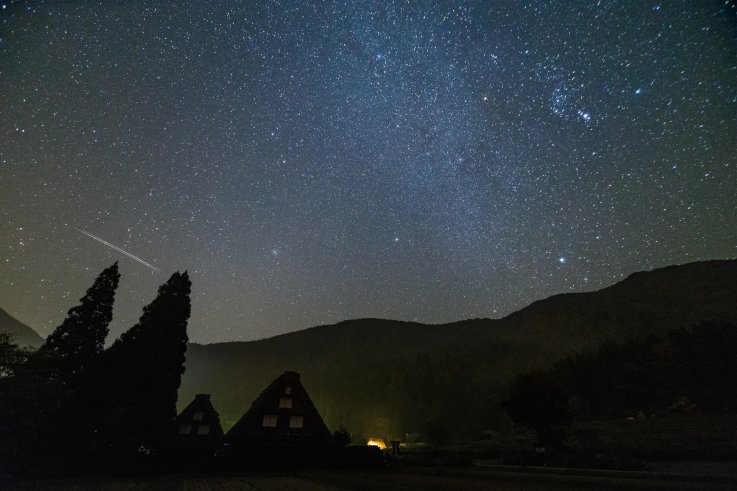This year's Orionid meteor shower will be at its best and brightest tonight (October 21-22) as the celestial phenomena lights up the skies of the Northern and Southern Hemispheres.
The annual event usually begins around October 2, picking up steam towards the middle of the month and petering out into November. This year, the shower's peak will take place on the night of October 21-22, when stargazers can expect to see around 15 meteors an hour provided the sky is moonless.
According to NASA, the event is "considered to be one of the most beautiful showers of the year," with the Orionid meteors famed for their "brightness" and "speed."
Indeed, the space rocks fly across the sky at speeds of 41 miles (or 66 kilometers) per second. At this velocity, they can turn into fireballs and leave trails of debris that can be seen for seconds and sometimes even minutes after the meteor's transit, says NASA.

On how best to view the Oronids tonight, NASA said: "Find an area well away from city or street lights. Come prepared with a sleeping bag, blanket or lawn chair.
"Lie flat on your back with your feet facing southeast if you are in the Northern Hemisphere or northeast if you are in the Southern Hemisphere, and look up, taking in as much of the sky as possible. In less than 30 minutes in the dark, your eyes will adapt and you will begin to see meteors."
NASA also has recommendations on the best angles to view the show: "It is actually better to view the Orionids from 45 to 90 degrees away from the radiant. They will appear longer and more spectacular from this perspective. If you do look directly at the radiant, you will find that the meteors will be short—this is an effect of perspective called foreshortening."
Tonight's viewing may be hampered slightly by the position of the moon, whose glare may obscure observations to some extent, warns Space.com.

What are the Orionids?
The Orionid meteors extend from the constellation Orion—hence the name—but can be seen throughout the night sky. They are pieces of space rock or debris from the Halley's Comet, named after Edmond Halley, who discovered it.
Comet Halley was last seen in the inner Solar System in 1986 and is not expected to make a return until 2061, but space debris enters the Earth's atmosphere far more regularly than that. Thus the Orionids appear every year in October.
Halley's debris also interacts with the Earth's atmosphere in May, when the meteors are referred to as the Eta Aquarids.
The next meteor shower after the Orionids will be the Leonids, which can be seen between 6 and 30 November and are expected to peak on the night of the 17th, Space.com reports.
https://www.newsweek.com/orionid-meteor-shower-shooting-stars-halleys-comet-tonight-1466598
2019-10-21 11:19:59Z
52780413194640
Bagikan Berita Ini














0 Response to "Orionid Meteor Shower: Shooting Stars from Halley's Comet to Light Up Sky Tonight - Newsweek"
Post a Comment